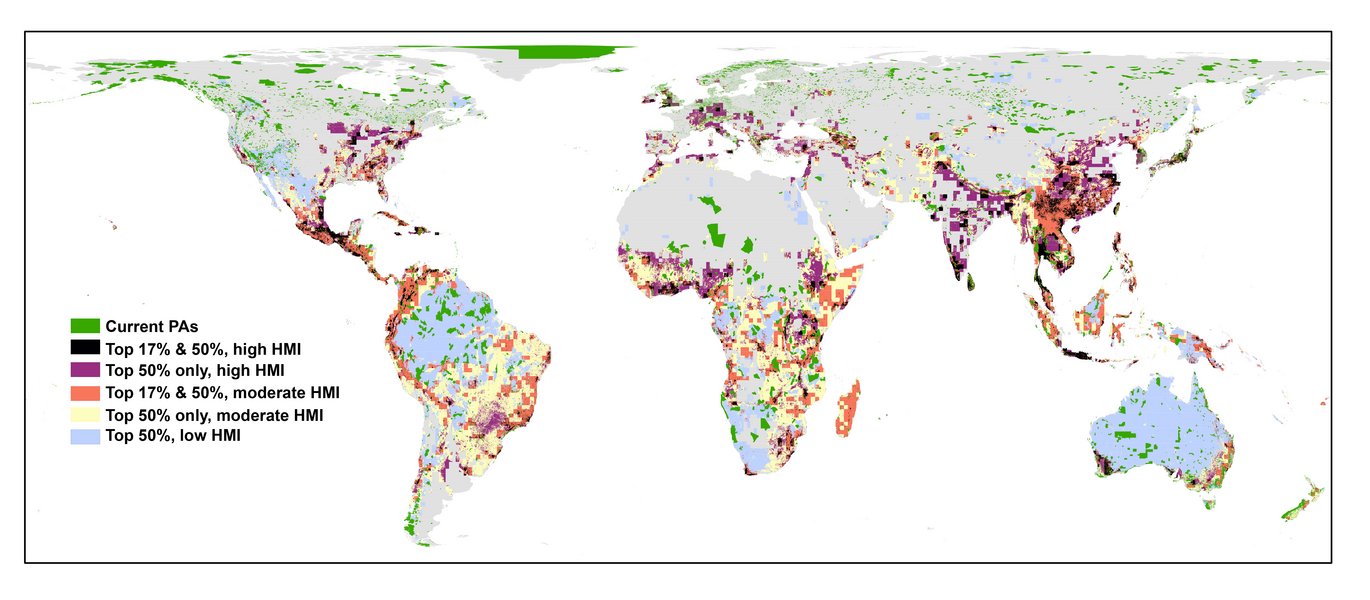Tree species diversity under pressure
In a new global study of more than 46,000 species of trees, an international team of researchers has shown that many tree species are under substantial pressure and poorly protected. The research team, headed by Aarhus University, has also studied how this situation can be improved by means of ambitious and smart designation of new protected natural areas.

Trees play an important role for natural ecosystems, for our climate and for societies across the world. However, recent research shows that many tree species are rare, and are at risk of disappearing.
This is why Jens-Christian Svenning, professor of biology at Aarhus University, took the initiative to conduct this large-scale research project. He is the director of the Center for Biodiversity Dynamics in a Changing World (BIOCHANGE) and was previously involved in mapping the earth’s tree species.
Half of the trees grow in unprotected areas
The study shows that for the 46,752 tree species included in the study, half of the distribution of each tree species is in landscapes without any protected areas. On average, that is. For 13.6 per cent of the species, there is no protection at all – and they all have limited distribution, which in itself makes them vulnerable.
Furthermore, an average of 14.8 per cent of the species are exposed to high or very high human pressure, while 68.5 per cent are under moderate pressure. Only 17 per cent of the species are not under pressure from human activities.
How did the researchers arrive at these figures?
By integrating five large databases with registrations of the occurrence of tree species. They used these data to calculate the geographical distribution of each tree species. They then combined these distributions with a global map of how intensely human activities affect nature, and with the World Database on Protected Areas, which includes information on more than 200,000 such areas.
"By compiling millions of registrations collected by researchers and citizens across the world and shared in open databases, we can calculate where it’s most important to preserve and restore natural areas in order to effectively protect biodiversity," says Josep M. Serra-Diaz, who was previously affiliated with Aarhus University, and who is now an associate professor at AgroParisTech in France.
Smarter protection...
The researchers have not just quantified the threat to global tree richness; they went one step further and investigated how the situation can be improved.
"We did this by calculating the most suitable locations of potential protection areas if we are to safeguard tree species diversity, not only with regard to the coverage of species, but also with regard to their evolutionary and functional differences," explains lead author Dr. Wen-Yong Guo, who started the work at BIOCHANGE, but is now affiliated with East China Normal University in Shanghai.
The researchers have based their work on two existing plans for protecting the world's biodiversity:
- According to the UN Strategic Plan for Biodiversity 2011-2020, adopted in 2010, at least 17 per cent of land areas, lakes and watercourses were to be protected in 2020.
- Now, the 2050 Vision of Biodiversity is on the drawing board, and many interest groups are calling for the vision to be brought in line with the Half-Earth Project proposed by Harvard biologist, E.O. Wilson. The Half-Earth Project advocates protecting half the earth’s surface by no later than in 2050.
The studies conducted by the research group show that implementing these two area targets will make a substantial difference.
... can yeld great results
"But taking a broad-brush approach or just designating the most convenient areas, for example uninhabited tundra and desert areas, will not have the desired effect. Based on our calculations in this study, we’ve identified the areas in which nature conservation makes most sense to safeguard global tree diversity. If we’re smart, protecting 17 per cent of land areas would mean that, on average, a tree species will have protected areas in 66 per cent of the landscapes in which it is found, as opposed to the current 50 per cent. With the Half-Earth vision, the proportion would be 83 per cent. Two-thirds of the tree species that are currently fully unprotected will have protected areas in the landscapes in which they’re found if we reach the 17 per cent target,” explains Jens-Christian Svenning.
"But in order to achieve this, we have to look at the distribution of all species across the world, and establish protected areas so that they cover the species and their biological functions and evolutionary differences in the best possible way," he adds.
Additional information | |
| We strive to ensure that all our articles live up to the Danish universities' principles for good research communication(scroll down to find the English version on the web-site). Because of this the article will be supplemented with the following information: | |
| Read more | The article 'High exposure of global tree diversity to human pressure' in PNAS https://doi.org/10.1073/pnas.2026733119 |
| Contact | Professor Jens-Christian Svenning, Department of Biology, Aarhus University, Email: svenning@bio.au.dk, mobile: +45 2899 2304 |
